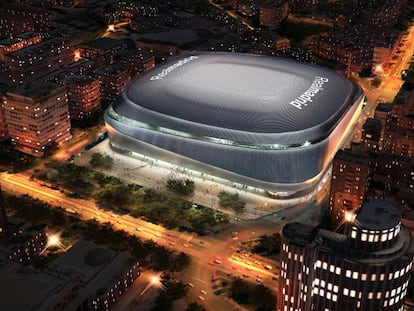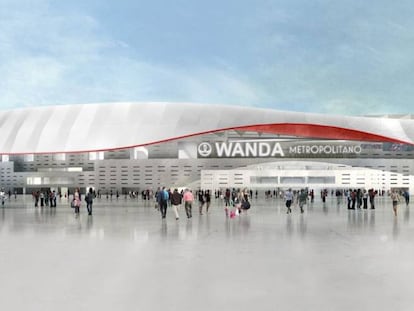The amazing arenas that inspired Atlético de Madrid’s new home
Spanish architects Cruz y Ortiz studied iconic soccer grounds in Munich, Milan and Beijing
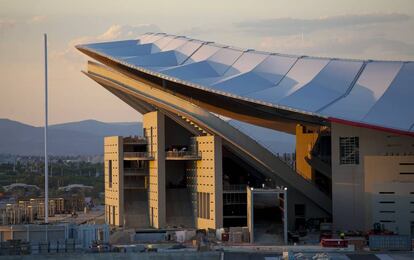
When Barack Obama awarded the prestigious Pritzker Architecture Prize to Eduardo Souto de Moura in 2011, the former US president paid tribute to the Braga stadium that the Portuguese architect built into a granite quarry. Not only did it seem to grow out of the landscape, but those who could not afford tickets could watch a match from the surrounding hills.
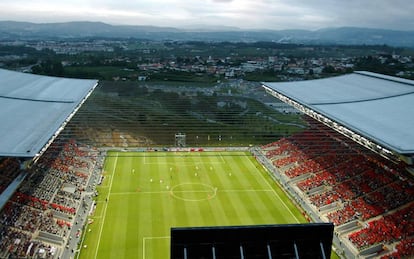
Forging a relationship with the surrounding environment is one of the main objectives of construction on this scale. Like Souto, Catalan architects RCR, who won the 2017 Pritzker, kept some of the trees on the site of their athletics stadium in Olot to afford athletes shade. Similarly, Seville design team Rubiño García Márquez set the Jaén stadium among olive groves while the architect studio Artengo, Menis and Pastrana constructed a volcanic crater to camouflage the Santa Cruz de Tenerife Athletics Stadium.
But if incorporating sports facilities into the landscape is hard in the countryside, it is nigh on impossible in an urban setting, which is why architects tend to do the opposite, turning them into iconic landmarks and earning praise for their visual impact.
The Beijing National Stadium, central to the Olympic Games of that city in 2008, and designed by Swiss architects Herzog & de Meuron is more commonly known as the Bird’s Nest, thanks to its steel sculpting. The studio’s Allianz Arena in Munich uses a plastic known as ETFE which has chameleon-like properties altering the color of the building, depending on which team is playing – Bayern or TSV 1860 Munich, promoting harmonious co-existence in a sport not usually associated with tolerance.
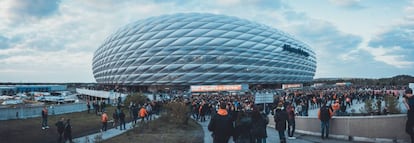
With contracts to design the new Chelsea and Bordeaux stadiums, Herzog & de Meuron are considered the most seasoned architects in the game. But it is architectural team Cruz y Ortíz who are behind Wanda Metropolitano, the new Atlético stadium in Madrid whose inauguration is scheduled for September 17 after lengthy delays.
The notion of promoting harmony was first evident in the Italian stadium San Siro, built in 1935 in Milan and home to two sporting giants, Inter and A.C. Milan. But it was architect Armando Ronca and engineer Ferrucio Calzolari who added the concept of dynamism when they extended the San Siro in 1955, adding access ramps that later inspired designers Lamela when it came to their 1992 work on Real Madrid’s Santiago Bernabéu stadium.
The current extension by architects GMP, L35 y Ribas&Ribas will hide these access ramps and provide Madrid with an enormous public square in return for the extension permit, highlighting the desirability of pacts between clubs and city councils.
Antonio Cruz and Antonio Ortiz have been working on the Wanda Metropolitano arena for 25 years
Given all these design concepts, it is hardly surprising that soccer stadiums now have their own following, though the Olympiastadion in Munich designed by Günther Behnischa and Pritzker prizewinner Frei Otto in 1972 is possibly the one with the biggest fan base. The economy of materials has the effect of making the structure look organic and alive, like an animal crouching in the landscape.
Inspired by the Munich stadium, as well as San Siro and Souto de Moro’s design in Braga, Antonio Cruz and Antonio Ortiz have been working on the Wanda Metropolitano arena for 25 years. “It was always an ongoing project. It has to have the potential to expand which is why, in 1992, we concentrated the spectators on one side of it, in La Peineta” says Cruz.
Functional
The building is made to be expandable with two points in the Peineta capable of bearing the weight of more pillars and the horizontal windows which allow light to flood into the interior.
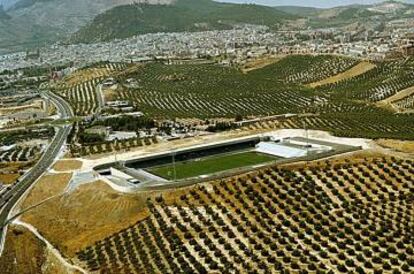
The brains behind the extension of the Rijksmuseum stadium in Amsterdam, Cruz and Ortiz prefer to focus on practicalities rather than a particular look. “The problem with concentrating on a specific material is the sensation it produces of having seen it before,” says Cruz.
English version by Heather Galloway.
Tu suscripción se está usando en otro dispositivo
¿Quieres añadir otro usuario a tu suscripción?
Si continúas leyendo en este dispositivo, no se podrá leer en el otro.
FlechaTu suscripción se está usando en otro dispositivo y solo puedes acceder a EL PAÍS desde un dispositivo a la vez.
Si quieres compartir tu cuenta, cambia tu suscripción a la modalidad Premium, así podrás añadir otro usuario. Cada uno accederá con su propia cuenta de email, lo que os permitirá personalizar vuestra experiencia en EL PAÍS.
¿Tienes una suscripción de empresa? Accede aquí para contratar más cuentas.
En el caso de no saber quién está usando tu cuenta, te recomendamos cambiar tu contraseña aquí.
Si decides continuar compartiendo tu cuenta, este mensaje se mostrará en tu dispositivo y en el de la otra persona que está usando tu cuenta de forma indefinida, afectando a tu experiencia de lectura. Puedes consultar aquí los términos y condiciones de la suscripción digital.
More information
Archived In
Últimas noticias
Most viewed
- Sinaloa Cartel war is taking its toll on Los Chapitos
- Oona Chaplin: ‘I told James Cameron that I was living in a treehouse and starting a permaculture project with a friend’
- Reinhard Genzel, Nobel laureate in physics: ‘One-minute videos will never give you the truth’
- Why the price of coffee has skyrocketed: from Brazilian plantations to specialty coffee houses
- Silver prices are going crazy: This is what’s fueling the rally

